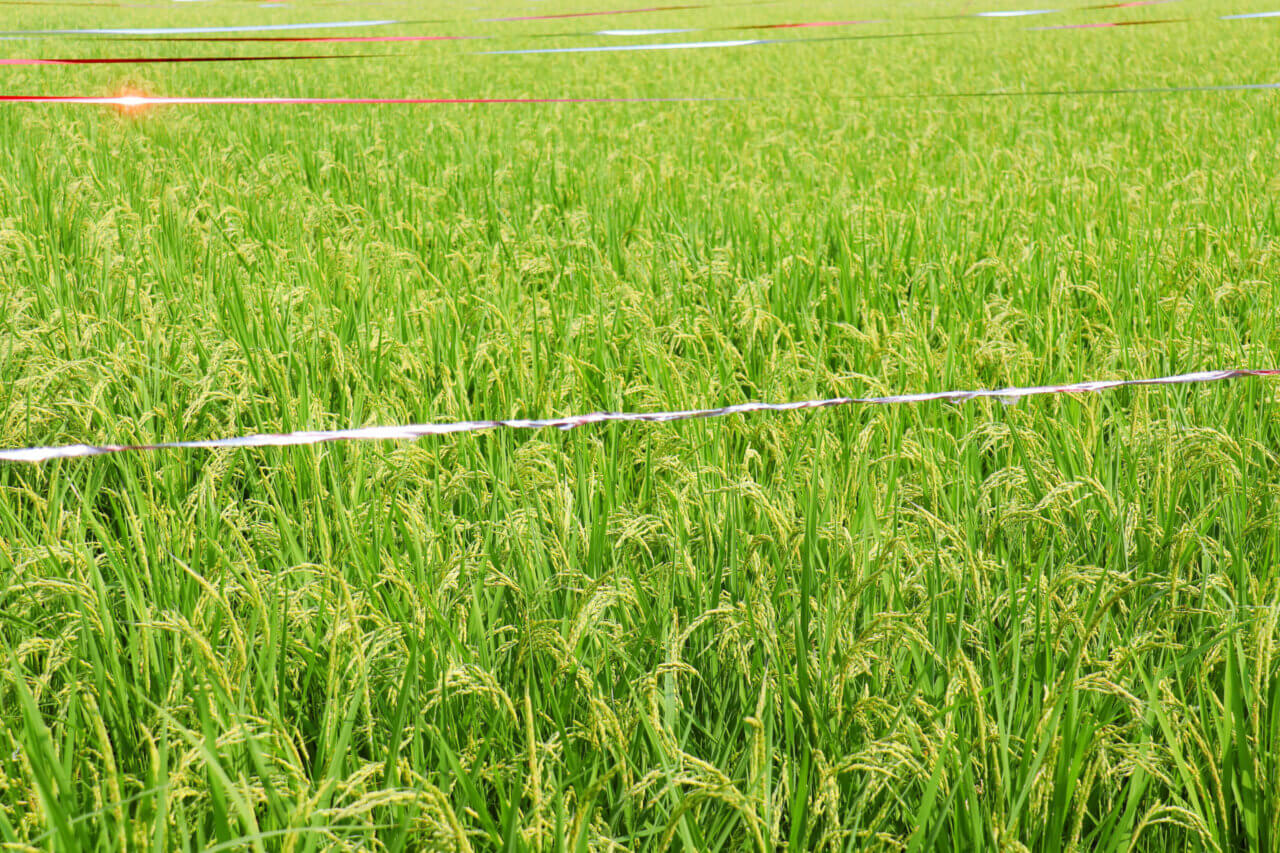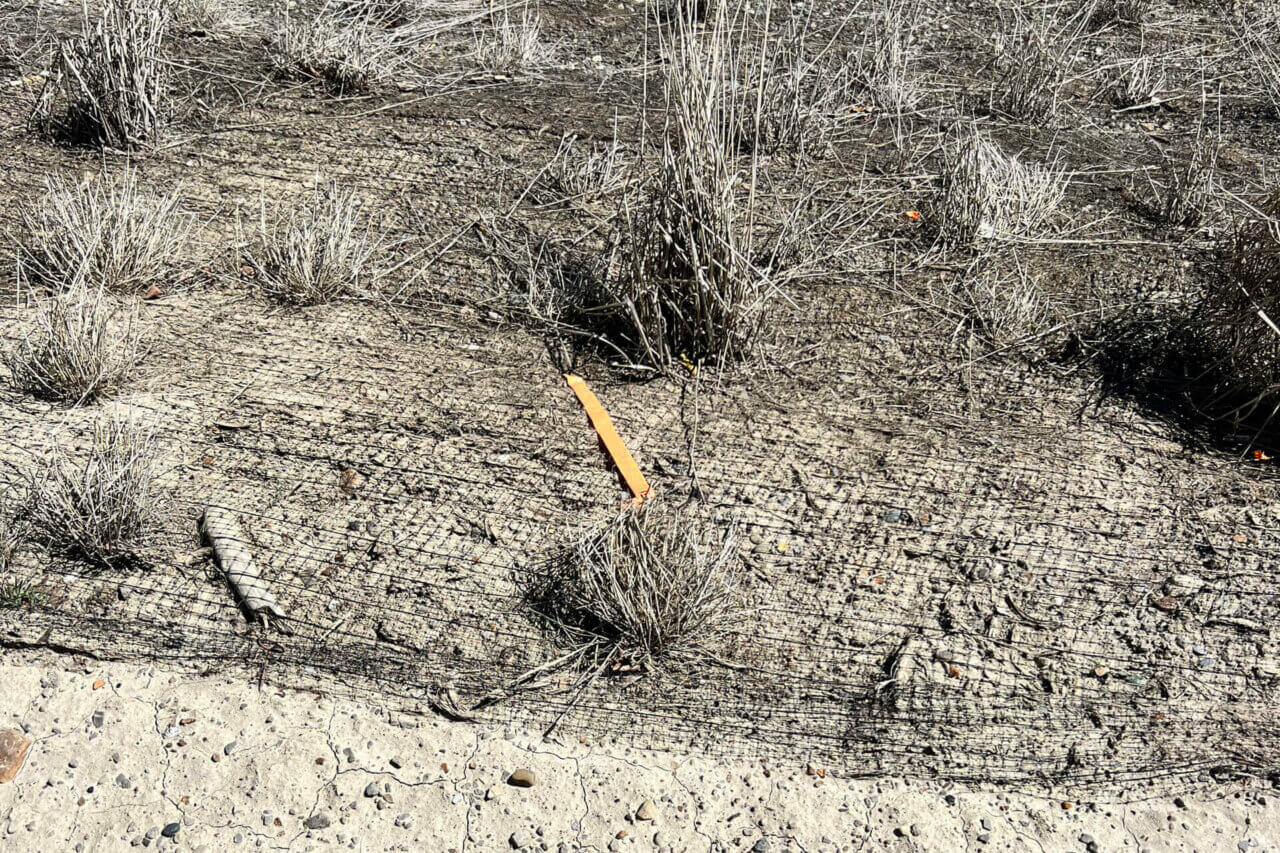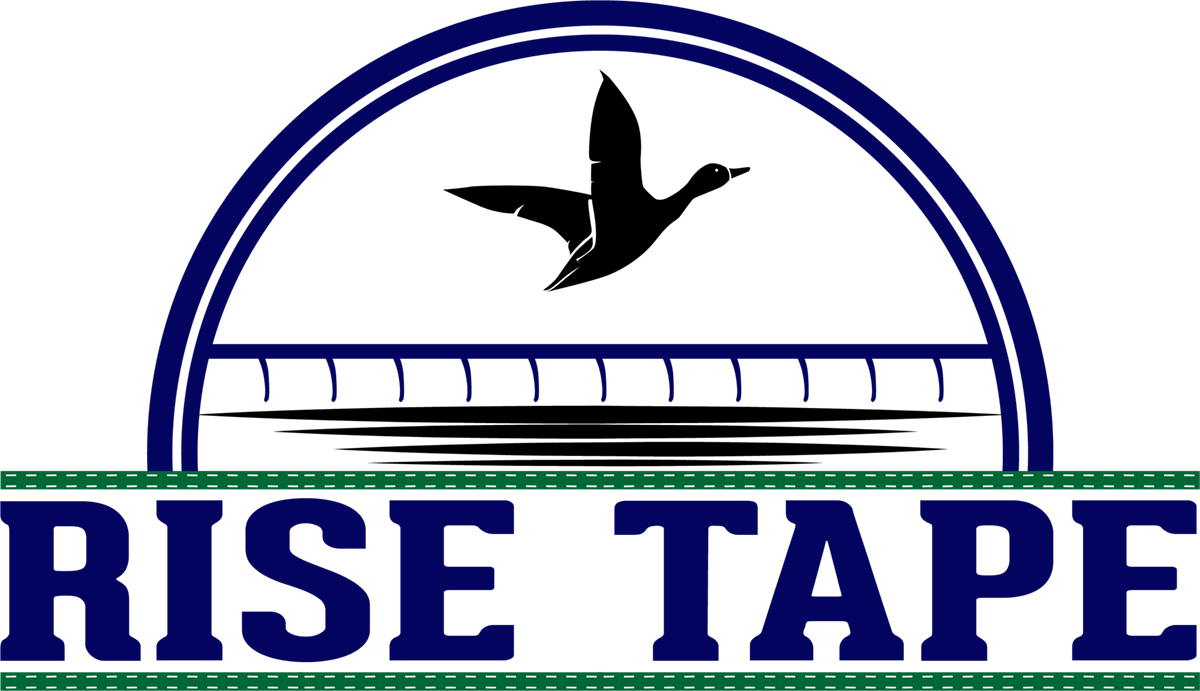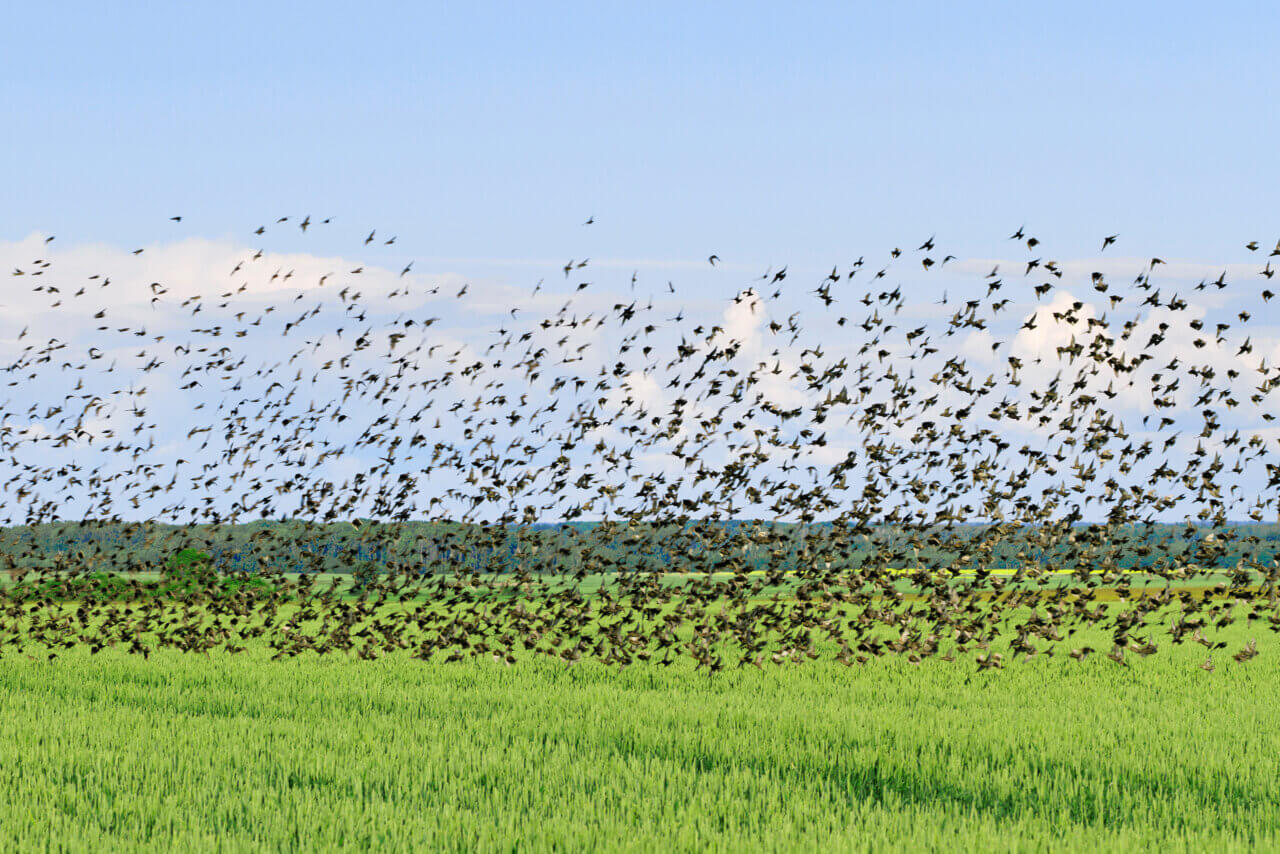Birds can be a significant nuisance in various environments, from urban settings to agricultural areas. They can cause damage to crops, buildings, and even pose health risks due to the diseases they carry, which is why a range of bird deterrent systems have been developed. In some other instances, bird repellants are employed to keep them away from potential harms. In this article, we will compare the most common types of bird deterrents, taking into consideration their effectiveness, humane factors, environmental impact, and legal considerations.
Physical Barriers
Bird Spikes
Bird spikes are rows of spikes are placed on surfaces where birds are likely to perch.
- Effectiveness: Generally effective for preventing perching, but ineffective for larger areas, especially against smaller birds that could nest between them.
- Best Used For: Window ledges, rooftops, and signs.
- Pros: Low maintenance, long-lasting, depending on the products.
- Cons: Can be unsightly and may harm birds if they do decide to perch on them.
- Humane Factor: Generally considered humane if tips are dull enough to avoid injuring birds.
- Legality: Widely legal in Canada and the US, but local regulations may vary regarding installation on historic or public buildings.

Bird Netting
Nets are used to cover areas, physically preventing birds from entering.
- Effectiveness: Very effective for larger areas such as gardens or crops.
- Best Used For: Orchards, vineyards, building facades.
- Pros: Provides complete exclusion, customizable to different sizes.
- Cons: Can be expensive and requires proper installation to avoid trapping birds.
- Humane Factor: Humane when installed correctly; improper installation can trap and harm birds or other wildlife.
- Legality: Legal in both Canada and the US, but must adhere to wildlife protection laws to avoid accidental trapping of protected species.
Auditory Deterrents
Sound Devices
Sound devices emit distress calls or predator sounds to scare birds away.
- Effectiveness: Can be effective if sounds are varied and played at irregular intervals, which delays habituation. However, without real threats or reinforcement, most birds will eventually habituate over time.
- Best Used For: Agricultural fields, large outdoor areas.
- Pros: Covers large areas, non-invasive.
- Cons: Can be disruptive to residents or workers nearby.
- Humane Factor: Humane as it does not cause physical harm to birds.
- Legality: Generally legal, but noise ordinances in Canada and the US may restrict their use in residential areas.
Ultrasonic Devices
Ultrasonic devices emit high-frequency sounds unnoticeable by humans that are supposed to deter birds.
- Effectiveness: Mixed results, as most birds can’t hear ultrasonic frequencies. However, these devices might deter species such as rodents and bats, potentially reducing food availability that attracts some birds.
- Best Used For: Warehouses, attics, and other enclosed spaces.
- Pros: Silent for humans, easy to install.
- Cons: Limited effectiveness depending on bird species and environment. Prolonged exposure could affect non-target animals, insects and possibly sensitive humans and pets.
- Humane Factor: Considered humane, though its effectiveness varies.
Firearms & Pyrotechnics
Firearms and pyrotechnics are used to create loud noises that scare birds away, without the intent of harming them.
- Effectiveness: Highly effective for dispersing birds from hazardous areas.
- Best Used For: Large, open areas such as toxic ponds or industrial sites.
- Pros: Immediate and powerful deterrent.
- Cons: Require operators. Can be disruptive and dangerous if not handled by professionals.
- Humane Factor: Humane if used responsibly and without intent to harm birds.
- Legality: Heavily regulated in most countries; requires proper permits and adherence to strict safety protocols.
For more information, read our article on the effectiveness of sound-based bird control solutions.
Chemical Deterrents
Bird Gels and Liquids
Sticky substances applied to surfaces to make them uncomfortable for birds to land on.
- Effectiveness: Effective but requires reapplication.
- Best Used For: Ledges, rooftops, and other flat surfaces.
- Pros: Non-toxic, easy to apply.
- Cons: Can be messy and may need frequent reapplication.
- Humane Factor: Humane, as it only makes surfaces uncomfortable without causing harm.
- Legality: Some products may be subject to environmental regulations regarding chemical use.
- Environmental Impact: Non-toxic and biodegradable options are preferred to minimize environmental impact. Care should be taken to avoid runoff into soil and water sources, which could affect local ecosystems.
- Agricultural Impact: Safe for use on crops when used according to manufacturer instructions. However, there’s a risk of residue on food crops, so it’s important to use products approved for agricultural use.
Taste Aversions
Chemical sprays that make food sources taste bad to birds.
- Effectiveness: Works well when birds are feeding on specific crops or plants.
- Best Used For: Agricultural areas, gardens.
- Pros: Targets specific areas, non-lethal.
- Cons: May need reapplication after rain or over time.
- Humane Factor: Humane, as it does not harm birds but simply deters them from feeding.
- Legality: Use in agricultural settings may be regulated under local environmental laws.
- Environmental Impact: Generally low if biodegradable and non-toxic products are used. Careful application is necessary to avoid affecting non-target species or contaminating water sources.
- Agricultural Impact: Approved products should not affect the safety of food crops, but reapplication may be necessary, especially after rain. Organic farmers need to ensure the deterrents comply with organic certification standards.
Behavioural Deterrents
Laser Systems
Laser systems are used to deter birds by projecting visible beams of light that move across surfaces. The movement of the light creates a perceived threat, causing birds to avoid the area.
- Effectiveness: Very effective, especially at dawn and dusk when birds are most active.
- Best Used For: Airports, large agricultural fields, and industrial sites.
- Pros: Non-lethal, can cover large areas.
- Cons: Requires human operation or an automated system, can be expensive.
- Humane Factor: Humane, as it does not physically harm birds.
- Legality: Legal, but use may be restricted near airports or sensitive areas.
Falconry
The use of trained birds of prey to scare away pest birds.
- Effectiveness: Highly effective, especially in areas where birds are difficult to deter.
- Best Used For: Airports, large estates, and agricultural fields.
- Pros: Natural and environmentally friendly.
- Cons: Requires a trained falconer, can be expensive.
- Humane Factor: Considered humane and natural, but some may view it as stressful for the prey birds.
- Legality: May require proper licensing and adherence to wildlife regulations.
Drones
Drones, including aerial and watercraft types, are used to scare birds away from specific areas.
- Effectiveness: Highly effective for covering large and hard-to-reach areas, especially in hazardous environments.
- Best Used For: Industrial sites, toxic ponds, large agricultural fields.
- Pros: Can cover large areas, remotely operated, adaptable to different environments.
- Cons: Expensive, requires skilled operators.
- Humane Factor: Humane if used correctly, as the drones only scare birds away without causing harm.
- Legality: The use of drones is regulated in most countries, especially near airports and other sensitive areas.
Visual Deterrents
Reflective Bird Tape
Bird tapes are shiny tapes, often holographic, that reflects light to repel birds.
- Effectiveness: Moderately effective under bright conditions.
- Best Used For: Gardens, patios, and small agricultural plots.
- Pros: Inexpensive, easy to install.
- Cons: Effectiveness diminishes in cloudy, winter, and low-light condition.
- Humane Factor: Considered very humane as it only scares birds away without causing harm.

Predator Decoys
Models of predatory birds like owls or hawks are placed in areas to scare away birds.
- Effectiveness: Initially effective, but birds can become accustomed to them if not moved regularly.
- Best Used For: Gardens, rooftops, and near crops.
- Pros: Easy to set up, no maintenance required.
- Cons: Requires repositioning to maintain effectiveness.
- Humane Factor: Humane, as it does not harm birds.
Survey Ribbons
Brightly coloured ribbons tied to stakes or other surfaces that flutter in the wind, creating visual movement to deter birds.
- Effectiveness: Effective as long as the ribbons stay vibrant and attached.
- Best Used For: Gardens, orchards, and agricultural fields.
- Pros: Inexpensive, easy to install, and can cover large areas quickly.
- Cons: May lose effectiveness over time as ribbons fade or become detached.
- Humane Factor: Very humane as it simply relies on visual disturbance without causing harm.

Rise Tape
Rise Tape isn’t simply an upgrade from survey ribbons; it is a much more superior solution in both functionality and durability. Designed for industrial-grade use, Rise Tape offers enhanced reflectivity, greater resilience to environmental factors, and long-lasting performance. This makes it ideal for challenging environments where standard ribbons fall short, such as areas exposed to UV rays, saltwater, or harsh weather conditions.
- Effectiveness: Extremely effective due to its high reflectivity and superior durability, even in harsh conditions like UV exposure or saltwater environments.
- Best Used For: Industrial sites, ponds, agricultural fields and waterfronts.
- Pros: Can be installed over water. UV and saltwater resistant, highly durable, and reflective. It also doubles as a safety marker and barrier, making it a versatile choice for various applications.
- Cons: As with all visual deterrents, effectiveness can diminish if birds become accustomed to it, though Rise Tape’s durability ensures it performs over the long term.
- Humane Factor: Very humane, relying on visual disturbance without harming birds.

Conclusion
Choosing the right bird deterrent system requires balancing effectiveness, humane treatment, and environmental impact. For smaller areas, physical barriers like spikes or netting may suffice, while larger, complex spaces benefit from a mix of visual, auditory, chemical, and behavioral methods. In challenging terrains, such as bodies of water where many systems cannot be installed, prioritize versatile solutions like Rise Tape, which offers both durability and minimal harm to birds and ecosystems. Always ensure compliance with local regulations, especially when wildlife is involved.






